Special Report
The Cost of a Computer the Year You Were Born
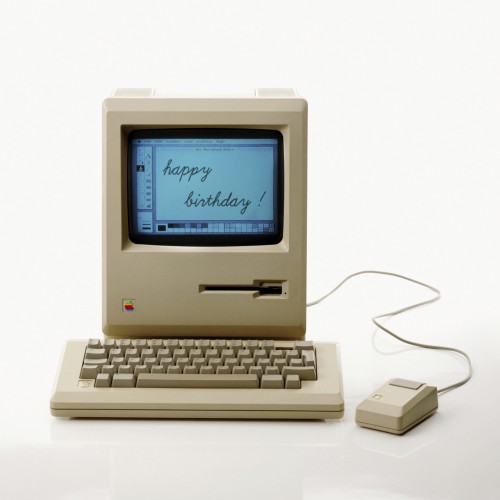
Published:
Last Updated:

Once wildly expensive and inaccessible but to the very rich, computers today are one of the most ubiquitous technologies worldwide. In 1972, the most basic model of an HP 3000 sold for $95,000, the equivalent of slightly over half a million in today’s dollars. Today, a brand-new computer costs just a few hundred dollars and has capabilities that in 1972 were the realm of science fiction.
The advent of the personal computer is one of the most important technological developments of the last century. Personal computers became accessible to the public in the early 1970s, as technology improved to the point that the devices no longer needed to be the size of a car to function. Personal computers were an innovation in both size and cost, offering consumers a product that could fit within both a small room and the typical budget. Although personal computers in the 1970s were larger and costlier than they are today, they were a significant improvement over the other machines available at the time.
The early desktop computers that arrived in the late 70s and through the 80s provided one tiny fraction of the graphics, storage, and processing capabilities of the devices we have today — and at the several times the cost. However, for the time, these machines represented a massive improvement in the way we process data, conduct business, and interact with the world.
Click here to see the cost of a computer the year you were born.
As the computer transitioned from technical marvel to household staple, a number of landmark devices that came on the market set the bar higher for the generation of PCs that would follow. These computers, which include 1977’s Apple II, 1980’s Commodore VIC-20, 1981’s IBM PC, were extremely popular at the time of their release. The Commodore 64 was released in 1982, and would eventually sell about 20 million units to become the best-selling personal computer of all time.
The 90s were also full of milestones in technology, in particular the widespread use of the Internet. Computers built to be easy and accessible, such as the iMac in 1998, provided American families with a portal to the world.
The last 15 years have had even more changes in the world of personal computing. The number of available devices rose, and the increasing quality of components allowed manufacturers to make smaller and lighter devices that could do much more.
In 2005, laptops outsold PCs in the United States for the first time. The iPhone’s introduction in 2007 marked the beginning of an era in which computing became truly mobile. Other handheld devices such as the iPad offered yet another option. In 2015, more tablets were sold than all laptops and desktop computers combined for the first time.
To estimate the cost of a computer in a given year, 24/7 Wall St. identified the price of specific computers representative of every year between 1971 to 2015. Computers were considered representative if it was released that year, and held an important place in the history of computing. A computer may be chosen as representative for a number of other reasons. A chosen computer may have been best-selling model of the year, or contain a significant technological development of that year, such as an innovation in processing power. Computers were only ever used for the year of their release, even if their sales or popularity reached a peak in a following year. The parameter of 1971 was set in accordance with the release of the first ever personal computer.
This is what a computer cost between 1971 and 2015.
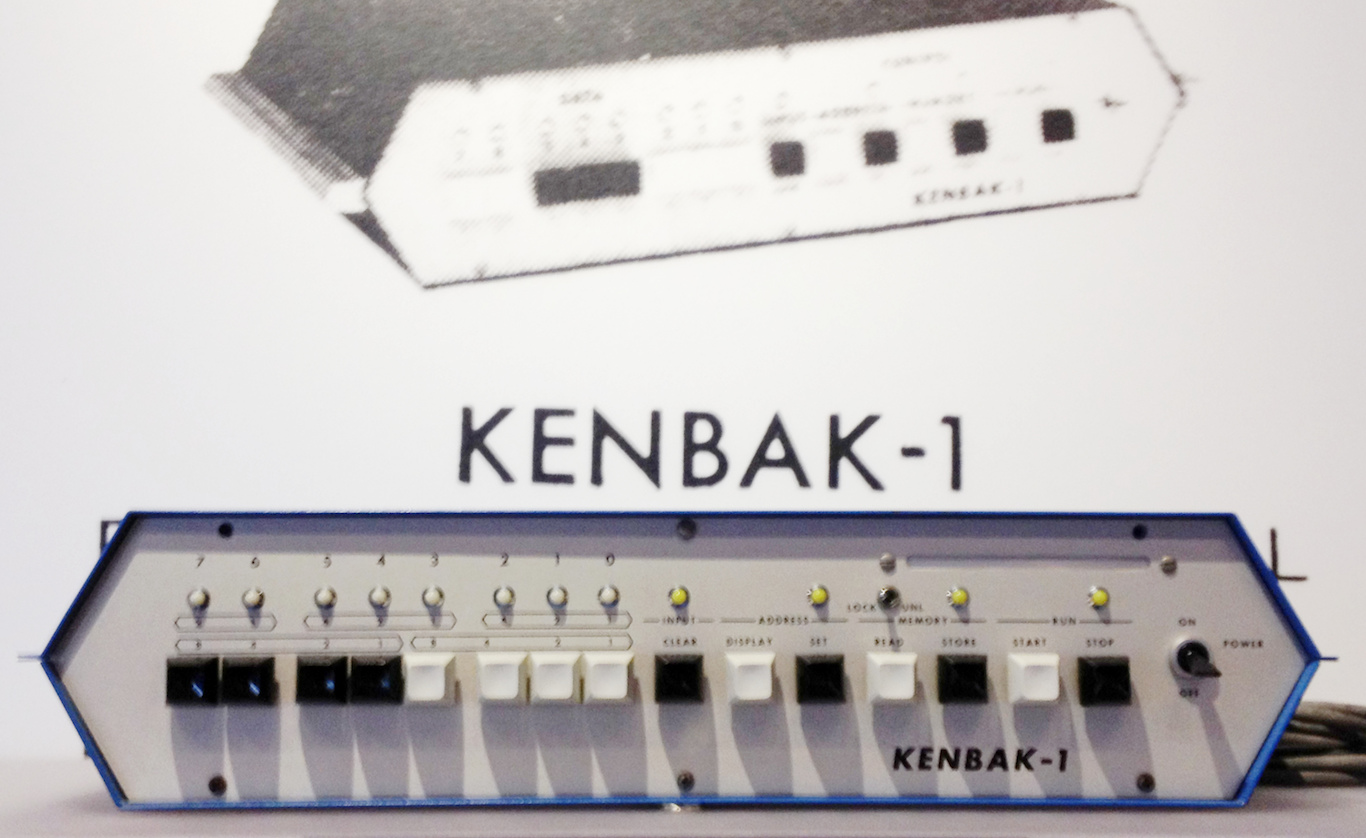
1971
>Notable computer: Kenbak I
>Price tag: $750
>Inflation adjusted price: $4,410
Deemed to be the first personal computer by the Boston Computer Museum, the Kenbak I looks nothing like modern computers. The Kenback I was designed as an educational machine to teach students how to write programs.
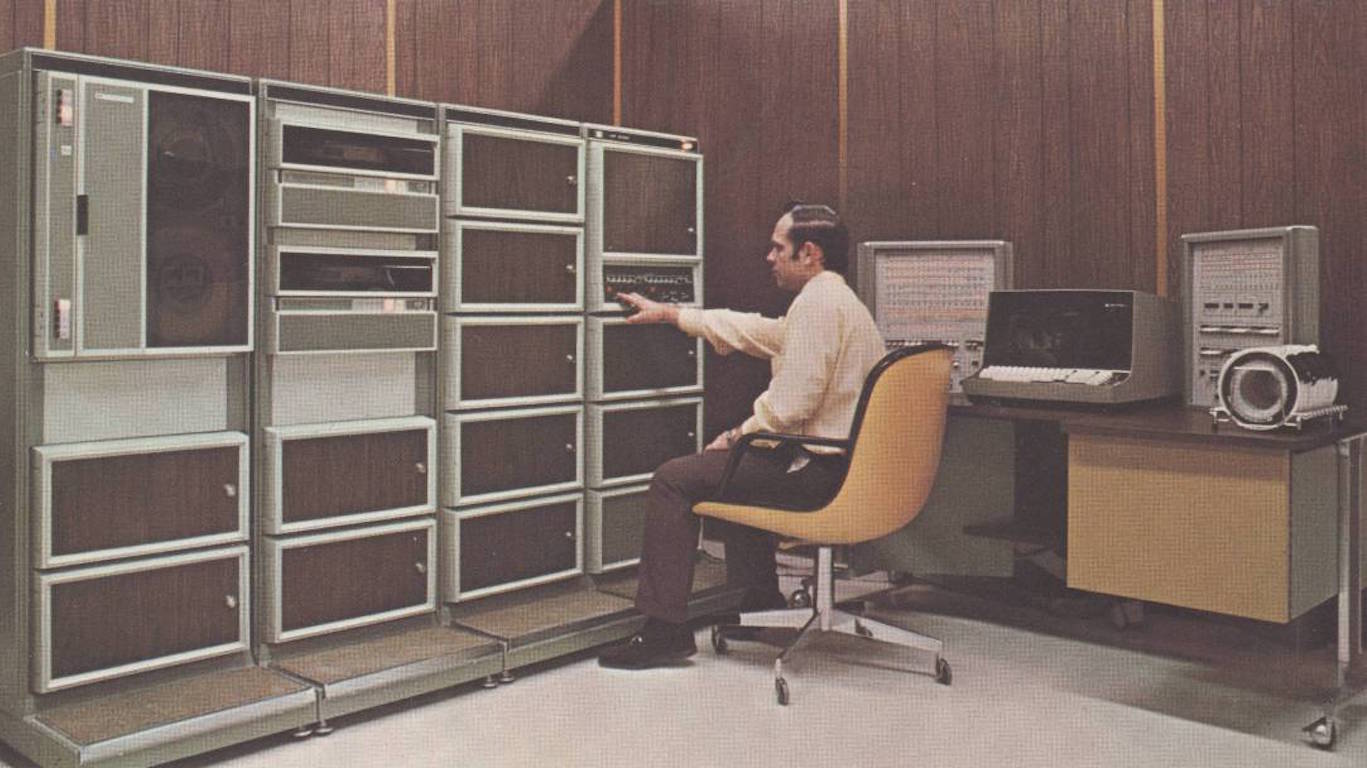
1972
>Notable computer: HP 3000
>Price tag: $95,000
>Inflation adjusted price: $541,209
Hewlett-Packard’s 3000 was the company’s first foray into smaller business computers. The original 3000 was generally considered a failure, but the company would go on to make 20 different versions of the 3000 through 1993.

1973
>Notable computer: Wang 2200
>Price tag: $3,500
>Inflation adjusted price: $18,772
With the introduction of the Wang 2200, Wang Laboratories successfully transitioned from calculator manufacturer to computer company.

1974
>Notable computer: Scelbi-8H
>Price tag: $440
>Inflation adjusted price: $2,116
The Scelbi was initially advertised in the back of an amateur radio magazine in 1974. The product would only sell about 200 units and was discontinued before the end of the decade.
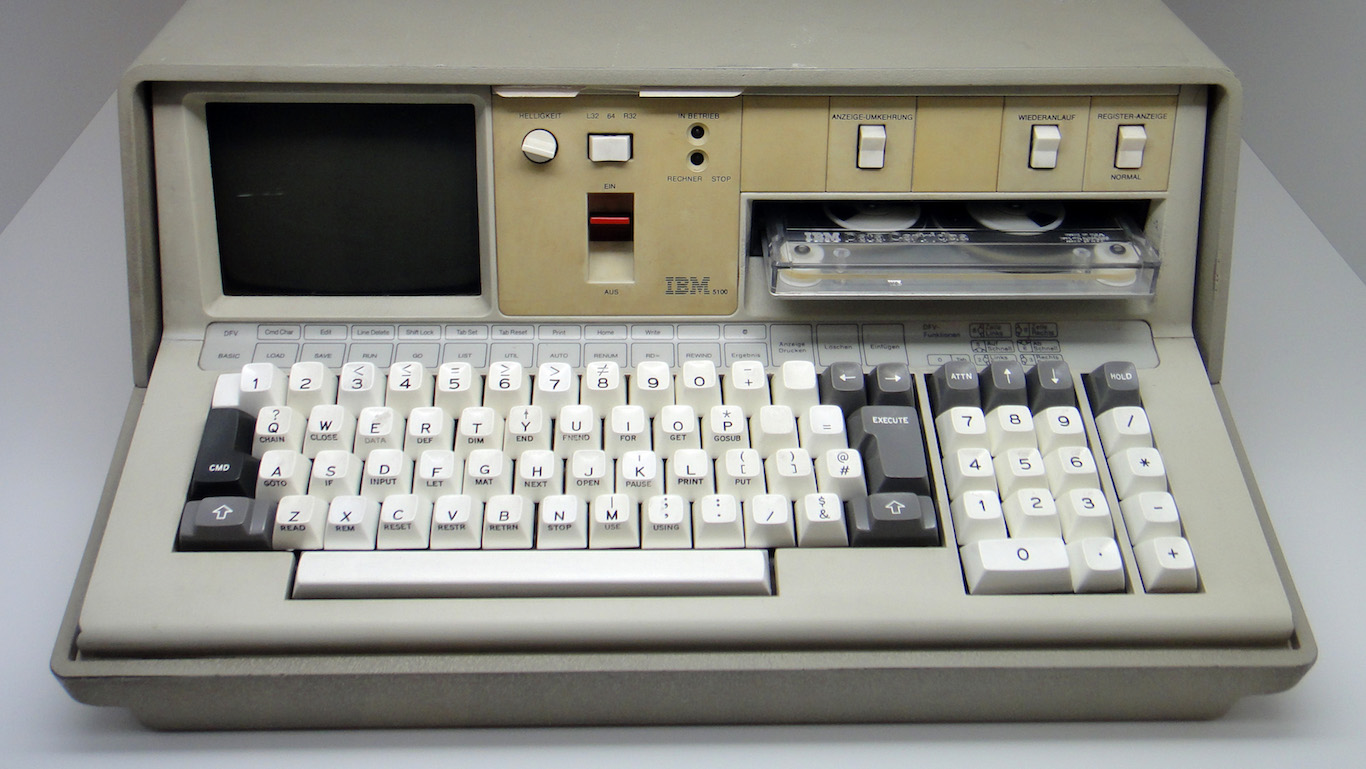
1975
>Notable computer: IBM 5100 Portable Computer
>Price tag: $8,975
>Inflation adjusted price: $39,555
At about 50 pounds, IBM’s 5100 Portable Computer was hardly portable by today’s standards. A decade earlier, a computer with the same processing capacity would weigh about half a ton.

1976
>Notable computer: Apple I
>Price tag: $667
>Inflation adjusted price: $2,778
The Apple I was the first product sold by Apple. It was originally designed for computer hobbyists who could make use of its bare circuit board. After Steve Jobs added a keyboard and display to its design, the Apple I was sold as a consumer product for $666.66. It was replaced by the more user-friendly Apple II the following year.
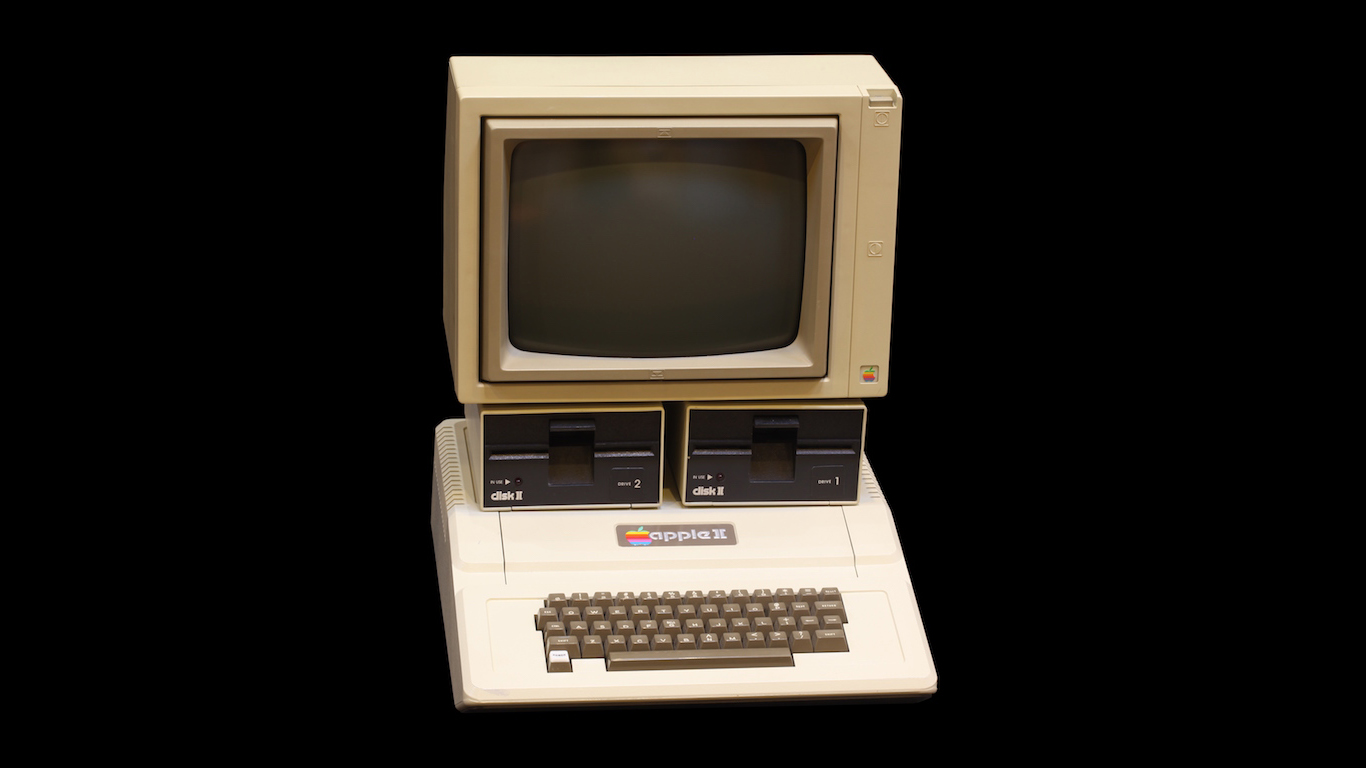
1977
>Notable computer: Apple II
>Price tag: $1,298
>Inflation adjusted price: $5,079
In 1977, the world was introduced to a personal computer that dramatically improved on the Apple I. Notably, the Apple II provided the entire personal computer package. It was pre-assembled, rather than in a kit. It is considered by many the first widely successful PC.
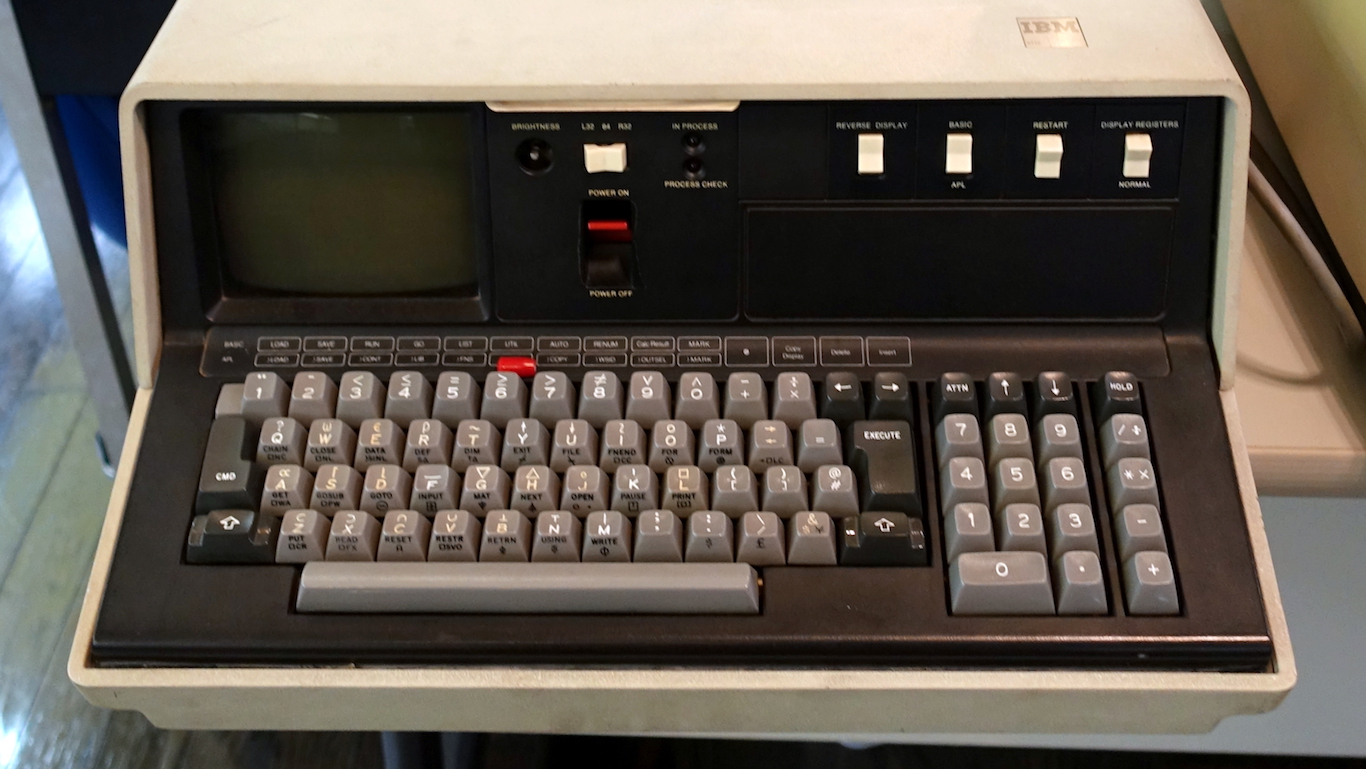
1978
>Notable computer: IBM 5110
>Price tag: $9,875
>Inflation adjusted price: $35,912
The IBM 5110 was designed to be an affordable machine to assist businesses with accounting and reporting. Despite the company’s hopes, the computer never achieved mainstream success. Incidentally, 1978 was the year computers were first installed in the White House. Staffers in the president’s home were given access to Hewlett-Packard’s far more expensive HP 3000.

1979
>Notable computer: Heathkit H-89
>Price tag: $1,595
>Inflation adjusted price: $5,232
Even after pre-assembled machines such as the Apple II were being sold, many still bought personal computers sold as kits. Like many kits at the time, buyers of the H-89 needed to put together and even solder some components.
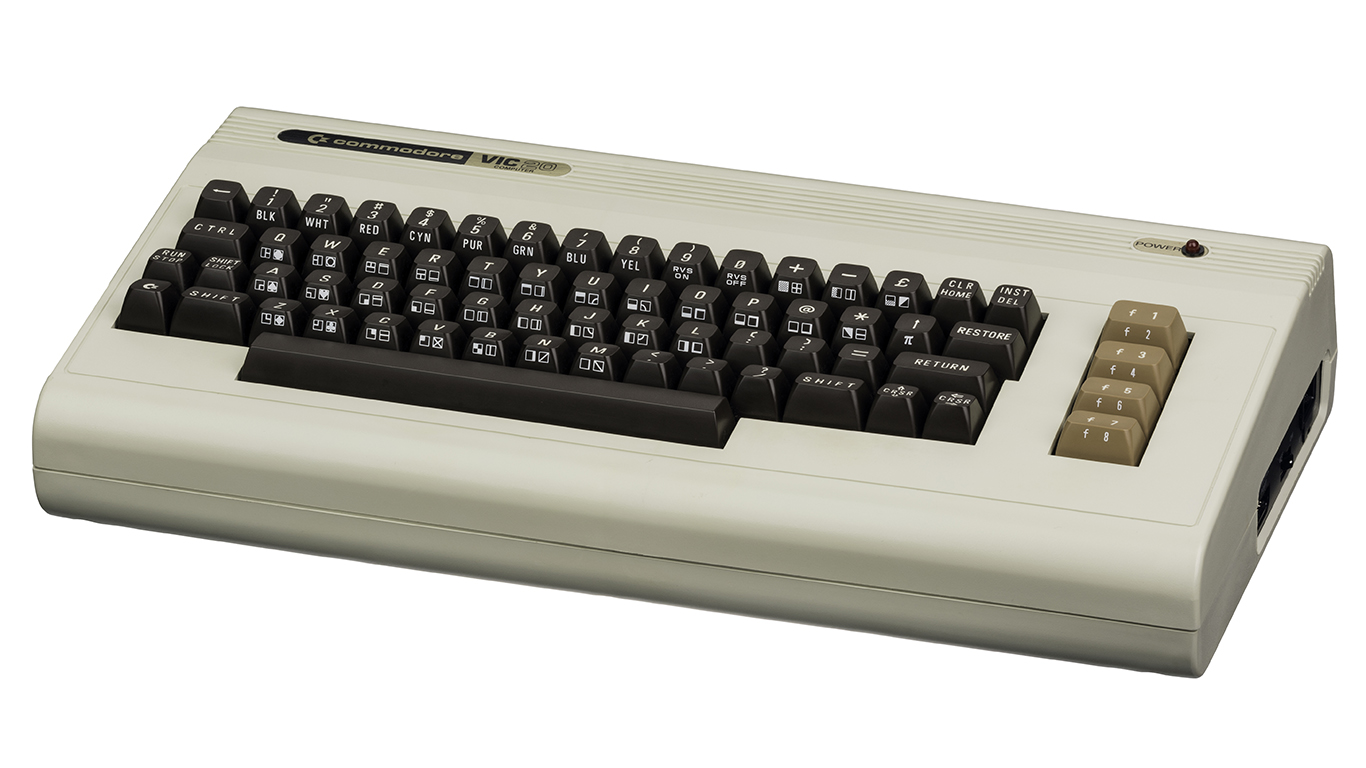
1980
>Notable computer: Commodore VIC-20
>Price tag: $299
>Inflation adjusted price: $860
Though it would not be released until January the following year, the Commodore VIC-20 was announced in June 1980. Once released, the Commodore was extremely popular and the company struggled to produce the VIC-20 fast enough to meet demand. The machine was also the first computer to ever sell more than a million units.
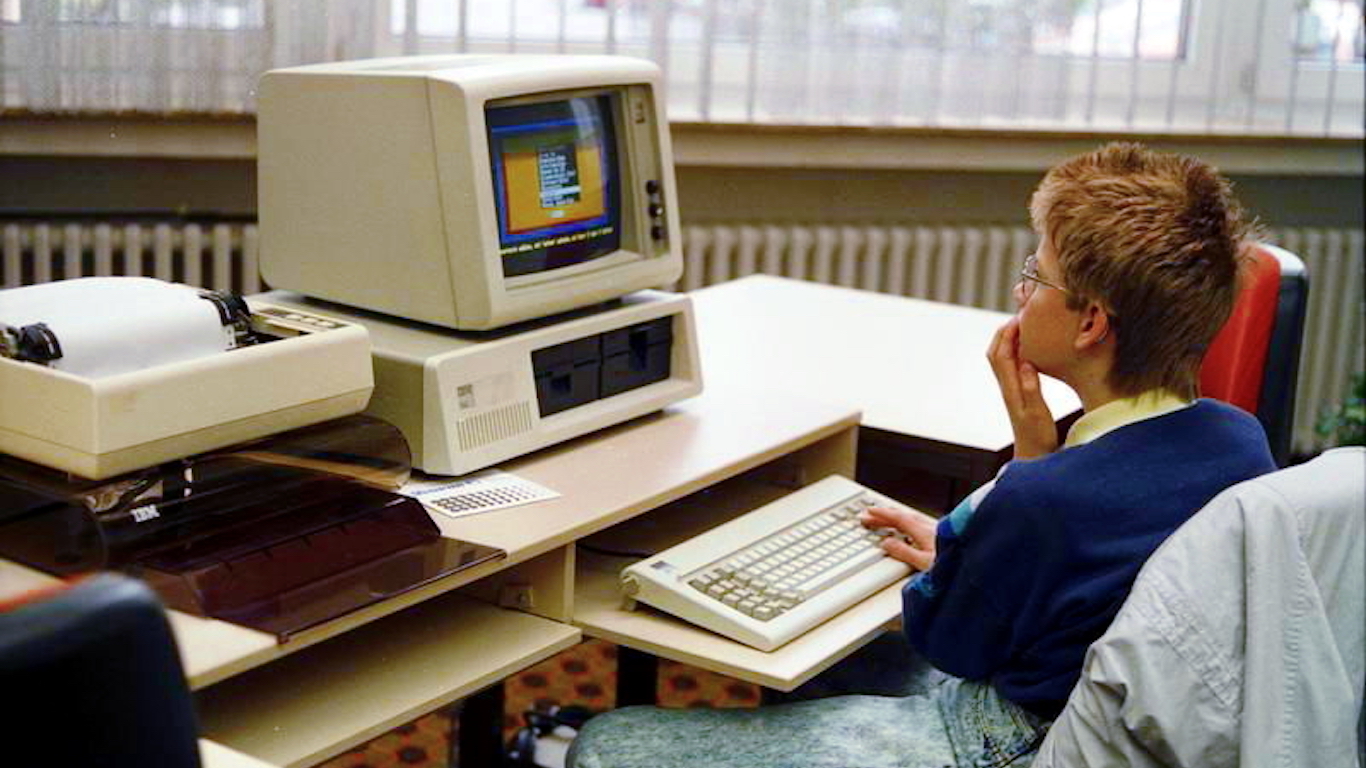
1981
>Notable computer: IBM Personal Computer 5150
>Price tag: $1,565
>Inflation adjusted price: $4,100
The PC 5150 was IBM’s most successful attempt at a personal computer at the time and was used as the basis for most computers that followed. The basic unit sold for $1,565, and the full model for $3,000.
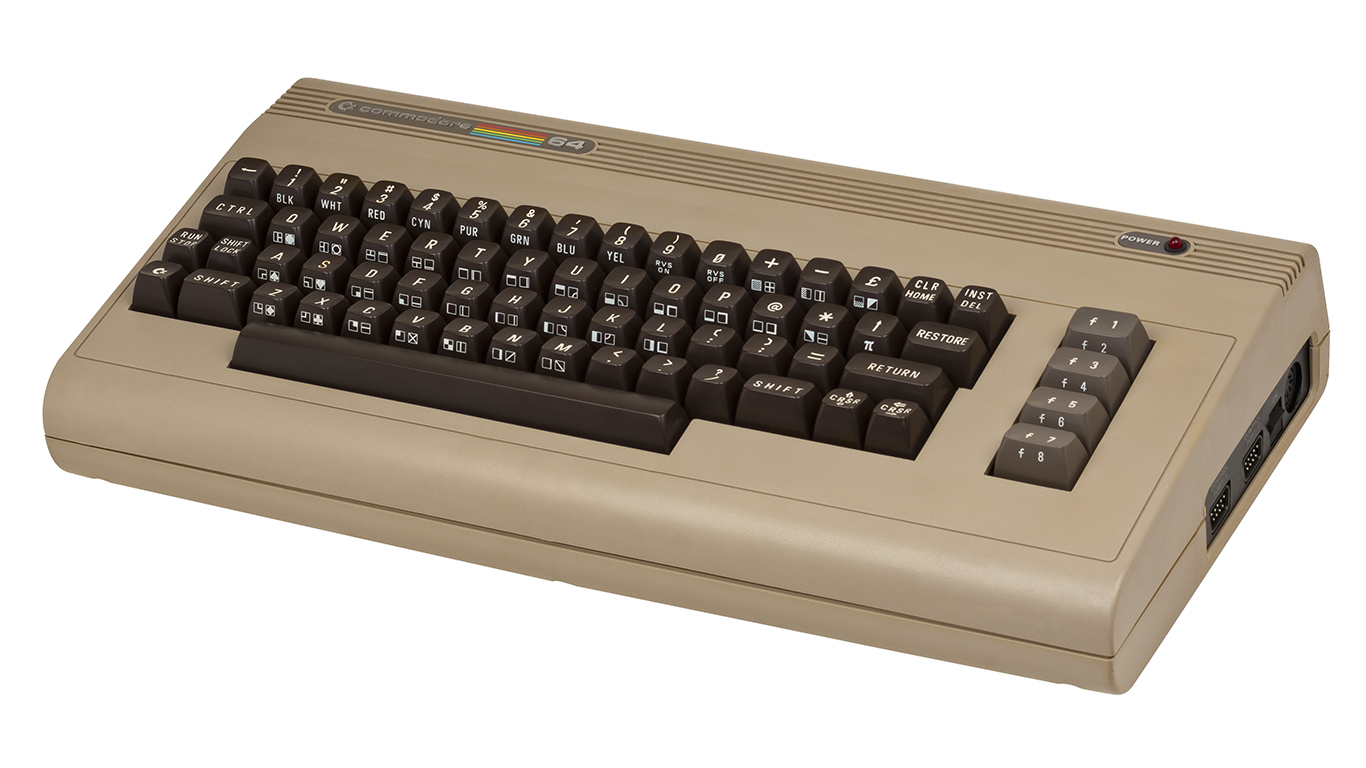
1982
>Notable computer: Commodore 64
>Price tag: $595
>Inflation adjusted price: $1,462
It may surprise some to learn that the best selling personal computer in history is not an Apple or an IBM, but rather a Commodore. The now-defunct Commodore International, which had also built the VIC-20, introduced the 64 in 1982, which was widely loved for its gameplay capability and state of the art sound chip. The Commodore 64 sold roughly 20 million units during its run.
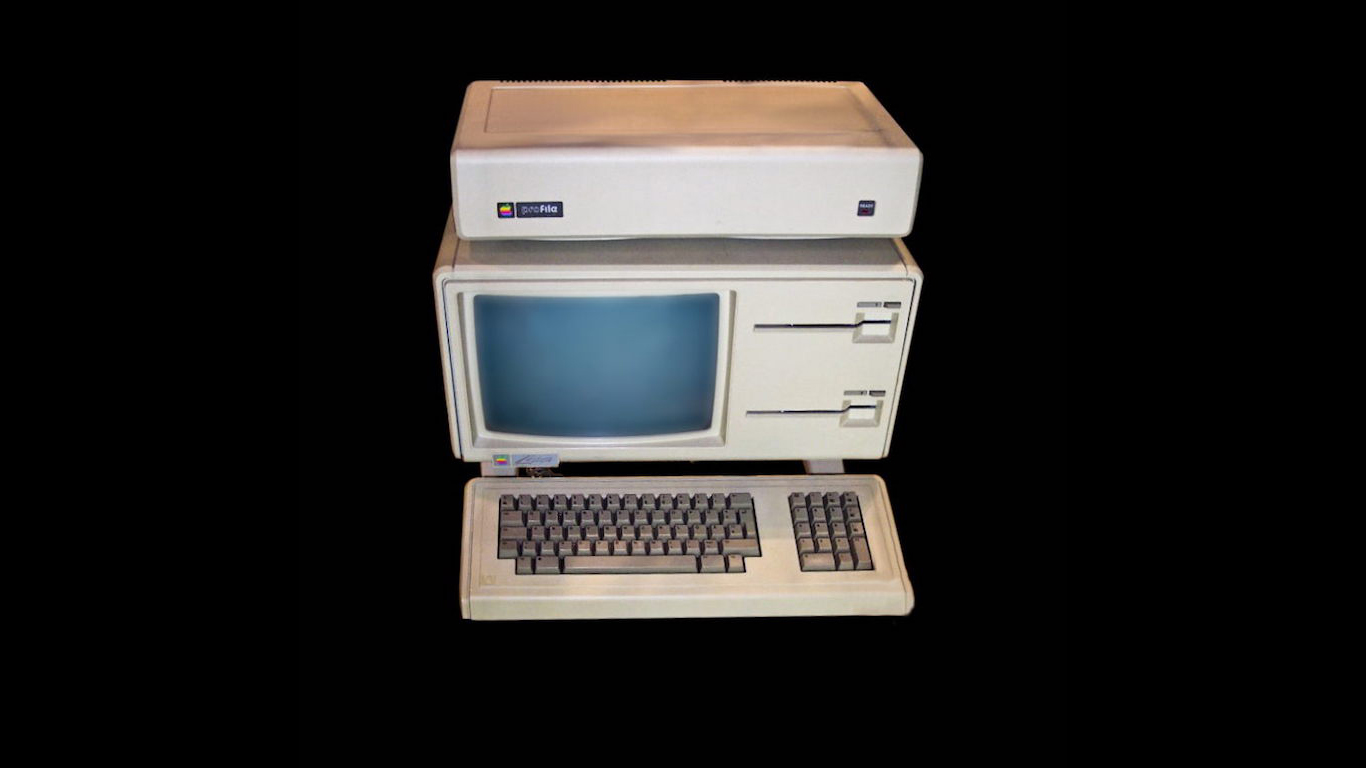
1983
>Notable computer: Apple Lisa
>Price tag: $9,995
>Inflation adjusted price: $23,794
The Apple Lisa was one of the first commercially available personal computers with a graphical user interface. However, the Lisa’s high cost ultimately doomed its chances of success. The machine was inspired by the nearly decade old Xerox Alto, which also had a graphical user interface though was never made commercially available.
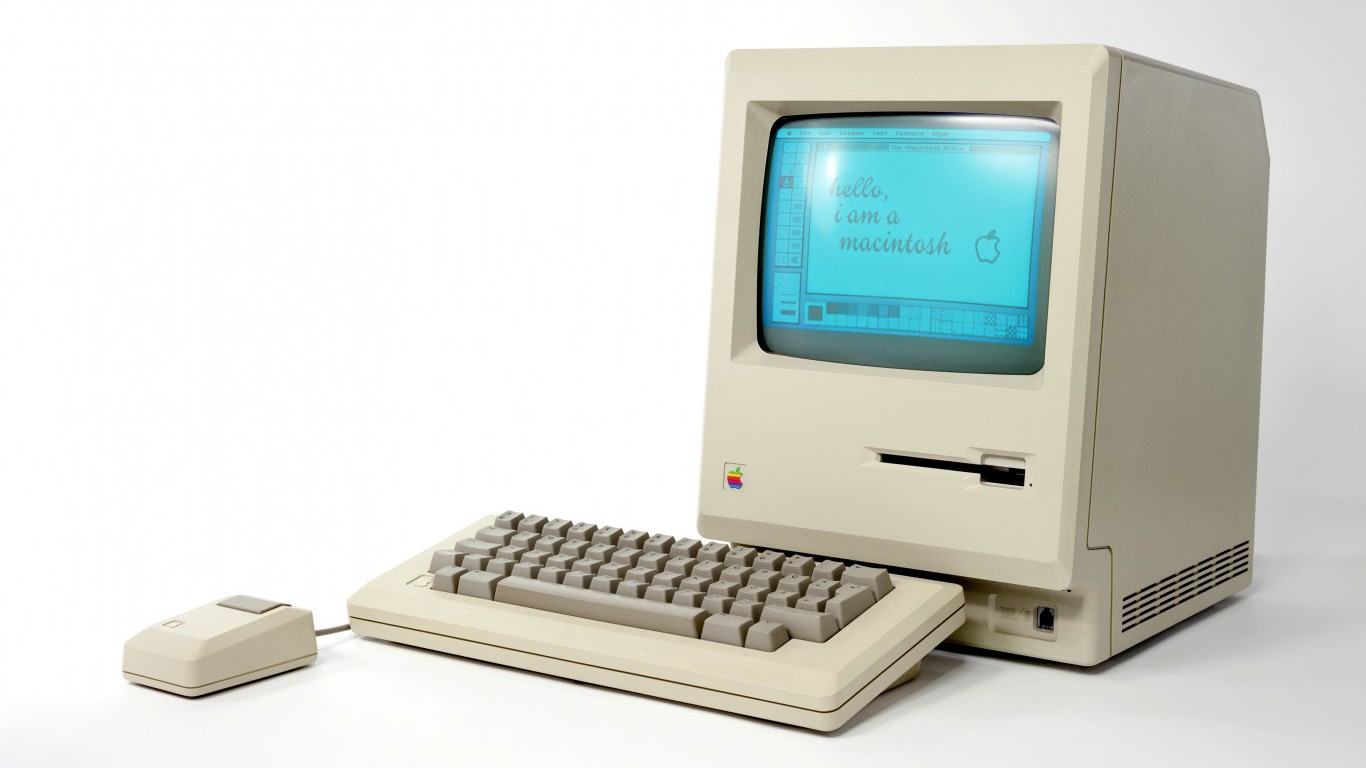
1984
>Notable computer: Apple Macintosh
>Price tag: $2,495
>Inflation adjusted price: $5,694
The Macintosh is considered to be the first commercially successful computer to have a graphical user interface. Users could navigate by clicking through images with a mouse as opposed to the text-based commands used in earlier computers. Apple’s TV ad evoked George Orwell’s dystopian novel 1984 and positioned Macintosh as a savior from the market dominance IBM had established by selling more than 2 million of its PCs.

1985
>Notable computer: Commodore Amiga 1000
>Price tag: $1,295
>Inflation adjusted price: $2,854
The Amiga 1000 was the world’s first multimedia computer. It could run multiple tasks at once, and its superior graphics, sound, and video capabilities made it a favorite amongst graphic designers. The Amiga 1000 launch party also attracted artists and included the likes of Andy Warhol, Debbie Harry, and musical group Blondie.

1986
>Notable computer: Compaq Portable II
>Price tag: $3,499
>Inflation adjusted price: $7,570
The Compaq Portable II, though markedly lighter than its predecessors, is hardly portable by today’s standards. Despite the machine’s relatively small 9 inch monitor, it weighed 26 pounds and did not pack as neatly as modern laptops.

1987
>Notable computer: Commodore Amiga 500
>Price tag: $700
>Inflation adjusted price: $1,467
Like some of its predecessors, including the Commodore 64, the Commodore Amiga is one of the most popular computers in history, selling more than 6 million units. The Amiga was relatively affordable and was also the first commercially available machine capable of animation and graphic design work.

1988
>Notable computer: NeXT Cube
>Price tag: $6,500
>Inflation adjusted price: $13,028
Just three years after being forced out of Apple, Steve Jobs introduced the NeXT with his new company, Cube. NeXT was eventually bought by Apple and the Cube’s operating system served as the foundation for Apple’s Mac OS.
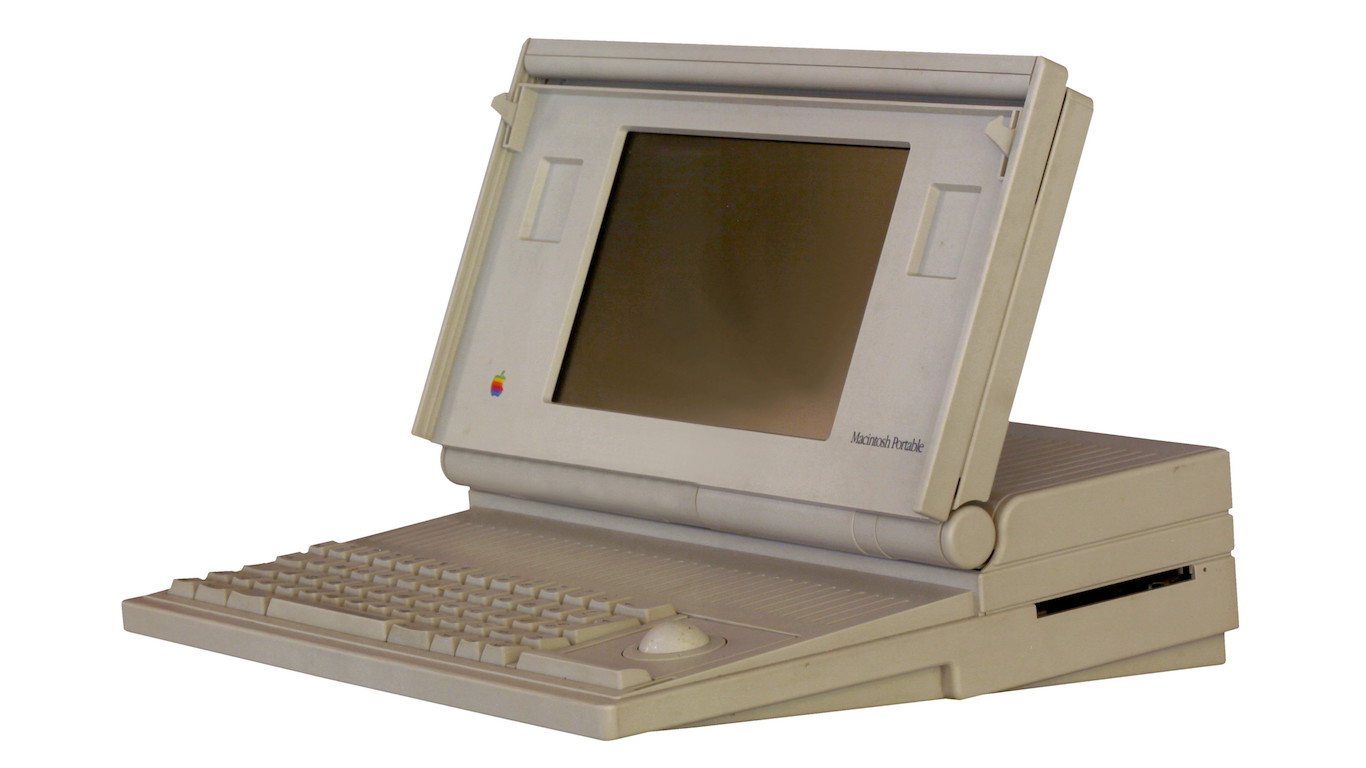
1989
>Notable computer: Macintosh Portable M5120
>Price tag: $7,300
>Inflation adjusted price: $13,959
Apple’s first portable Macintosh computer, the Portable M5120 had a crisper display and more processing power than most laptops available at the time. While it was designed to be the first portable Apple computer, people were known to already carry Macintosh desktops under their arms or in carrying cases while traveling. At 16 pounds, the laptop weighed almost as much as the desktop that preceded it.

1990
>Notable computer: Poqet PC
>Price tag: $1,995
>Inflation adjusted price: $3,619
At the time of its release, the Poqet PC was the smallest computer on the market. It was powered by just two AA batteries and had innovative power management software that could make the batteries last for several weeks.
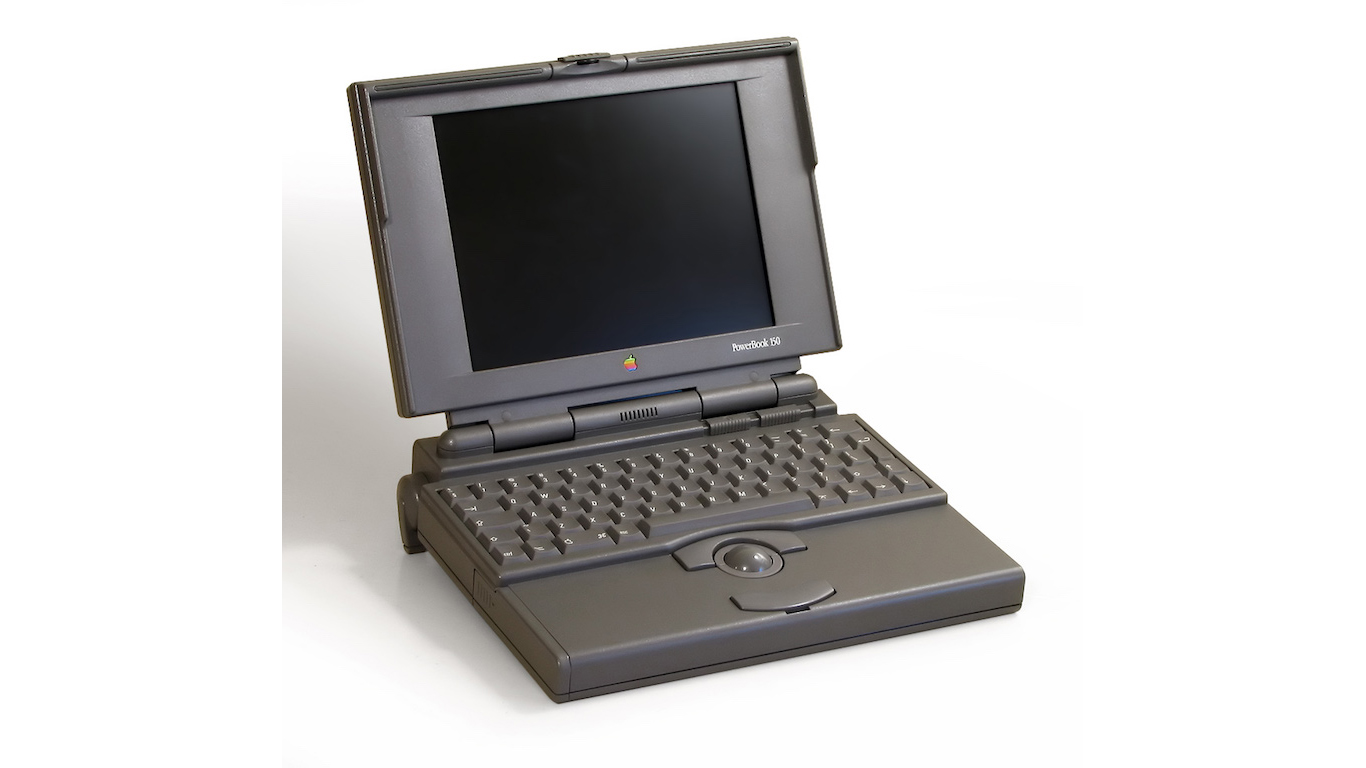
1991
>Notable computer: Apple Macintosh PowerBook
>Price tag: $2,299
>Inflation adjusted price: $4,020
Apple’s first attempt at a portable laptop computer in 1989 resulted in the Macintosh Portable, which at 16 pounds nearly weighed as much as the desktop that had preceded it. The PowerBook, however, weighed about 6 pounds and had all the processing power of the Portable. The PowerBook was also cheaper, and its keyboard position was considered an ergonomic innovation.
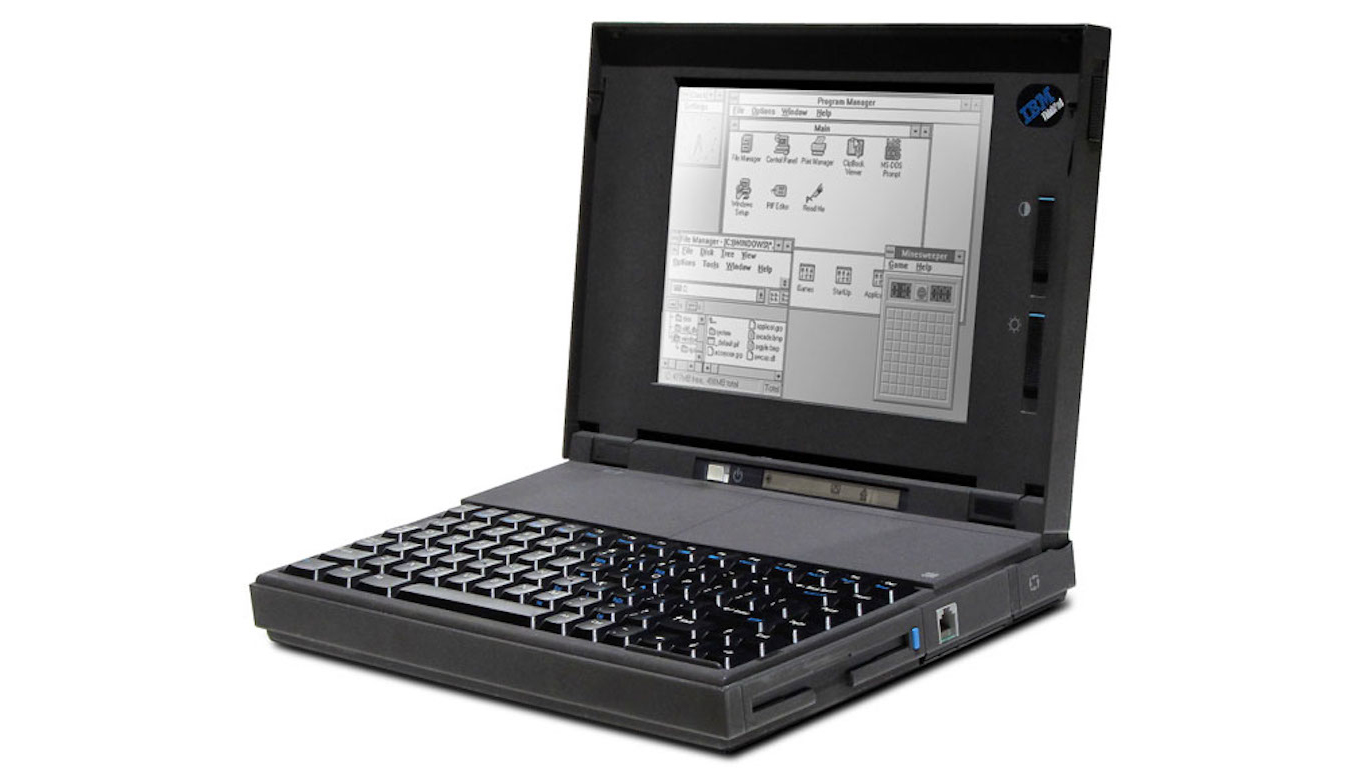
1992
>Notable computer: IBM ThinkPad
>Price tag: $2,375
>Inflation adjusted price: $4,014
The ThinkPad utilized the PenPoint Operating System. In addition to a traditional keyboard system, users could touch the screen with a stylus to operate their computers. The ThinkPad was named with former IBM President Thomas J. Watson, Sr. in mind, who coined the company’s motto “Think.”
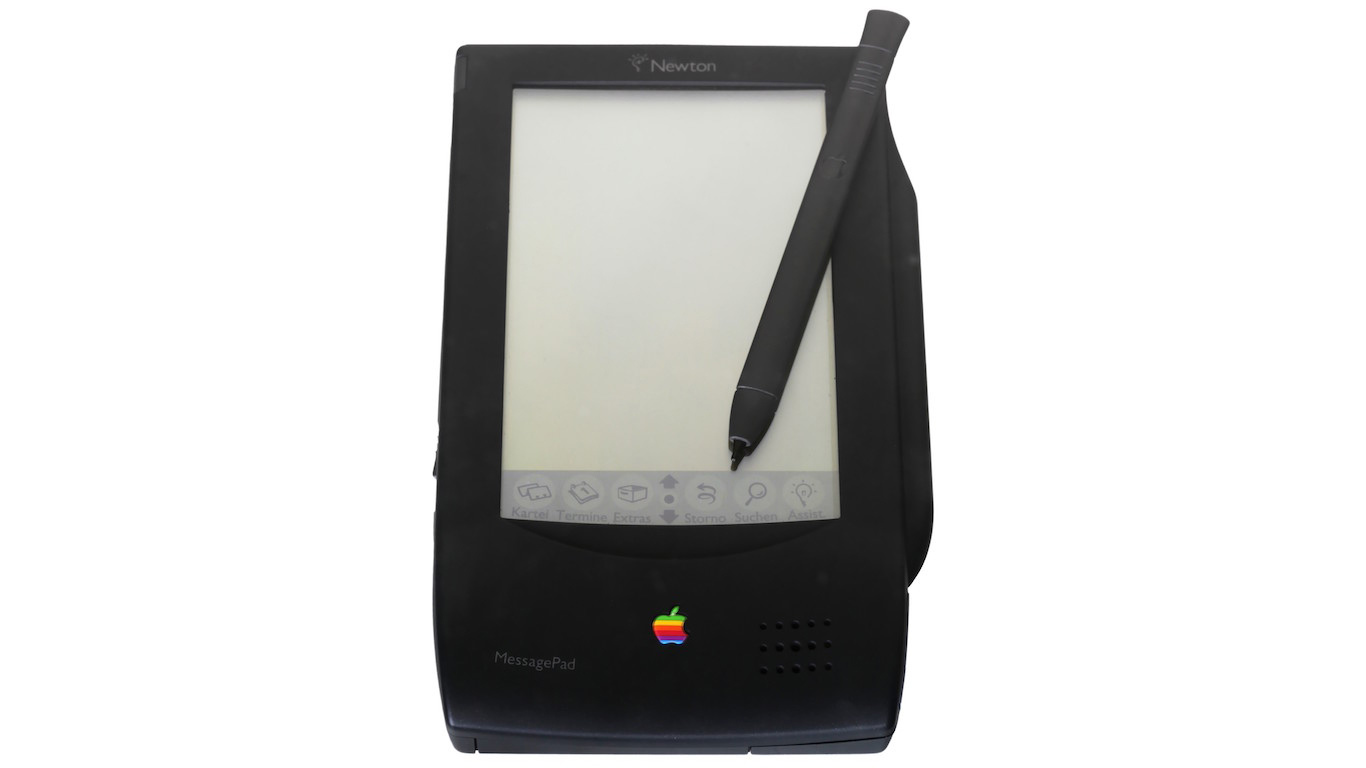
1993
>Notable computer: Apple Newton MessagePad
>Price tag: $700
>Inflation adjusted price: $1,149
The Apple Newton MessagePad was one of the first Personal Digital Assistants and a precursor to many of today’s smartphones. The device’s flawed handwriting recognition software, however, led to poor sales and ultimately the product’s discontinuation in 1998.
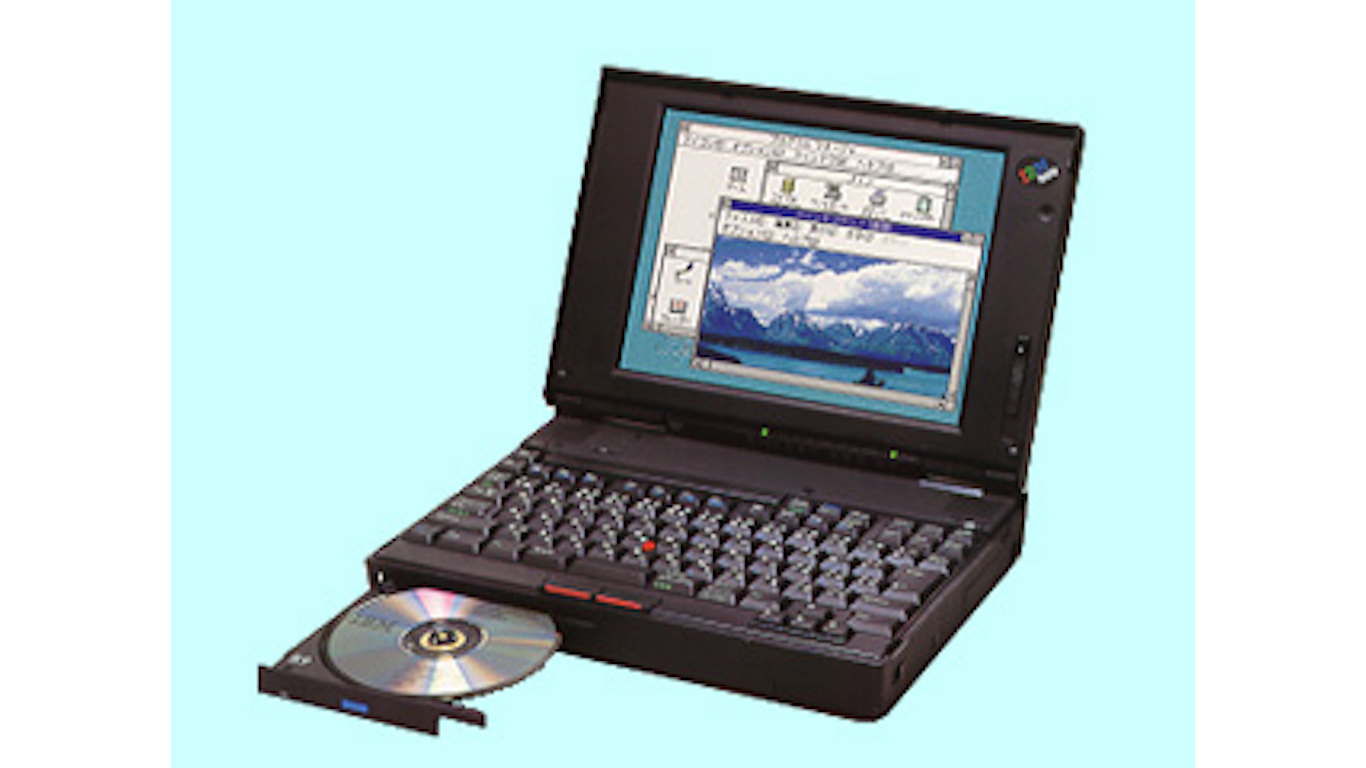
1994
>Notable computer: IBM ThinkPad 755CD
>Price tag: $7,599
>Inflation adjusted price: $12,210
The ThinkPad 755CD was the first laptop with a built-in CD-ROM drive. While notebook computers were still far less popular than desktops, the innovation was an important step to wide public adoption of laptop computing.

1995
>Notable computer: Gateway Solo 2000
>Price tag: $3,499
>Inflation adjusted price: $5,467
By 1995, many laptops were running on Intel Pentium processors, had built-in CD-ROM drives, operating Windows 95, and were gaining notoriety. The Gateway Solo 2000 was one such popular model.
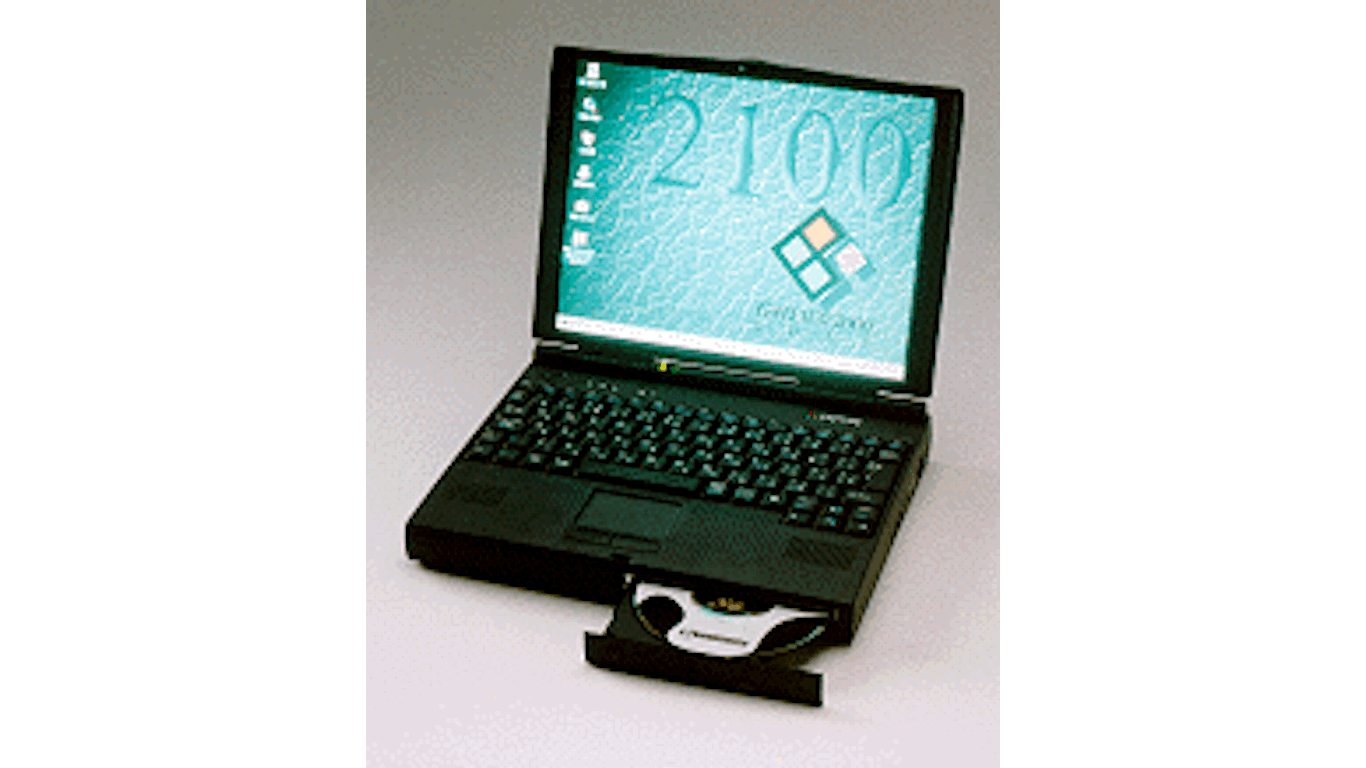
1996
>Notable computer: Gateway Solo 2100
>Price tag: $4,149
>Inflation adjusted price: $6,297
In the early days of laptop computing, computers were referred to by the number of spindles they had — that is, the number of built-in storage drives. The Gateway Solo 2100 was the first three-spindle computer. It had built-in hard disk, floppy disk, and CD-ROM drives.

1997
>Notable computer: Dell Dimension XPS H266
>Price tag: $3,979
>Inflation adjusted price: $5,904
Intel introduced the second generation of its popular Pentium processor in 1997, the Pentium II. The Dell Dimension XPS H266 was one of the first PCs to feature the new chip, and it was available for a starting price just under $4,000, the equivalent of about $5,900 today.
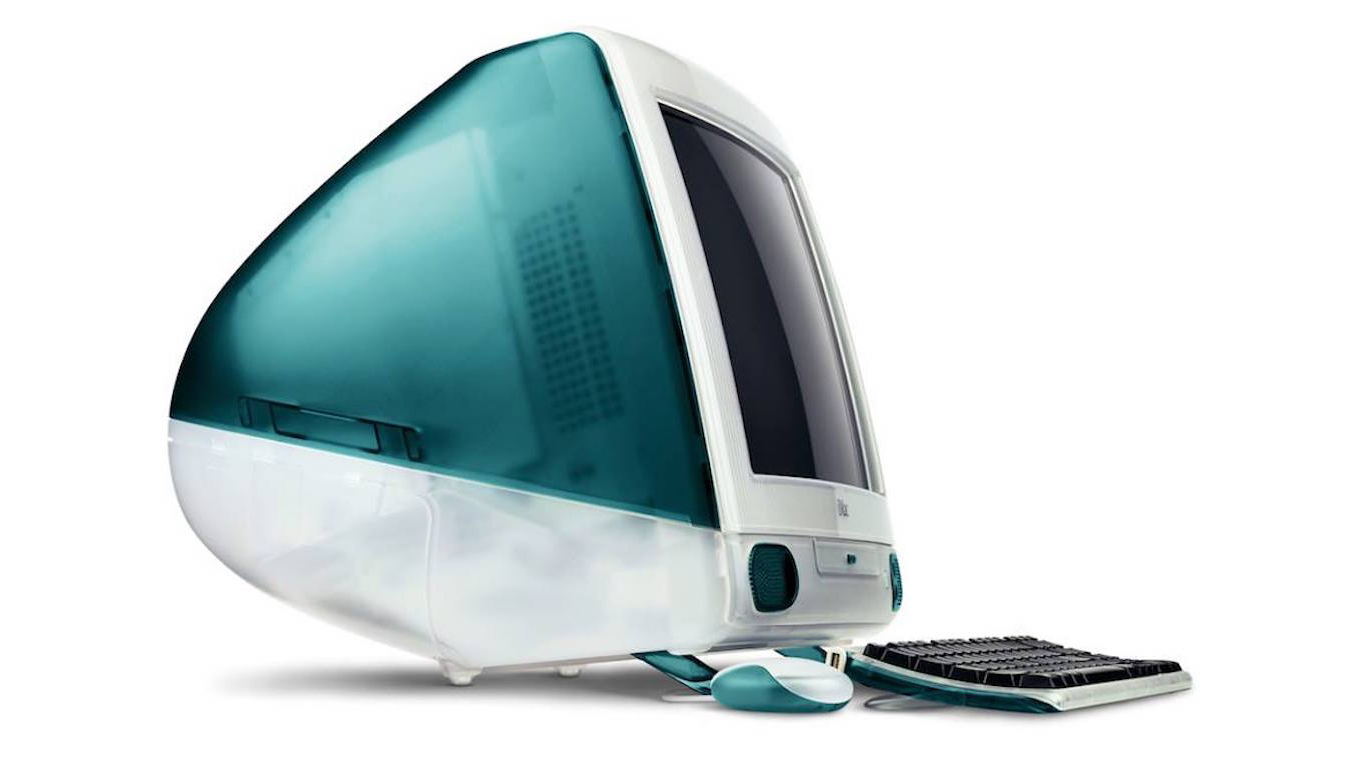
1998
>Notable computer: iMac
>Price tag: $1,299
>Inflation adjusted price: $1,898
Apple introduced in 1998 the next big thing in desktop PCs, combining both the monitor and components in a colorful case. The iMac, which offered one-click Internet access, also had considerably fewer previously used ports but two additional USB ports. This would become the standard input for most modern devices.

1999
>Notable computer: Compaq ProSignia Desktop 330
>Price tag: $2,699
>Inflation adjusted price: $3,858
The first computers with Pentium III processors became available in 1999. The Compaq ProSignia Desktop 330 was one of the most popular of the inaugural Pentium III computers.
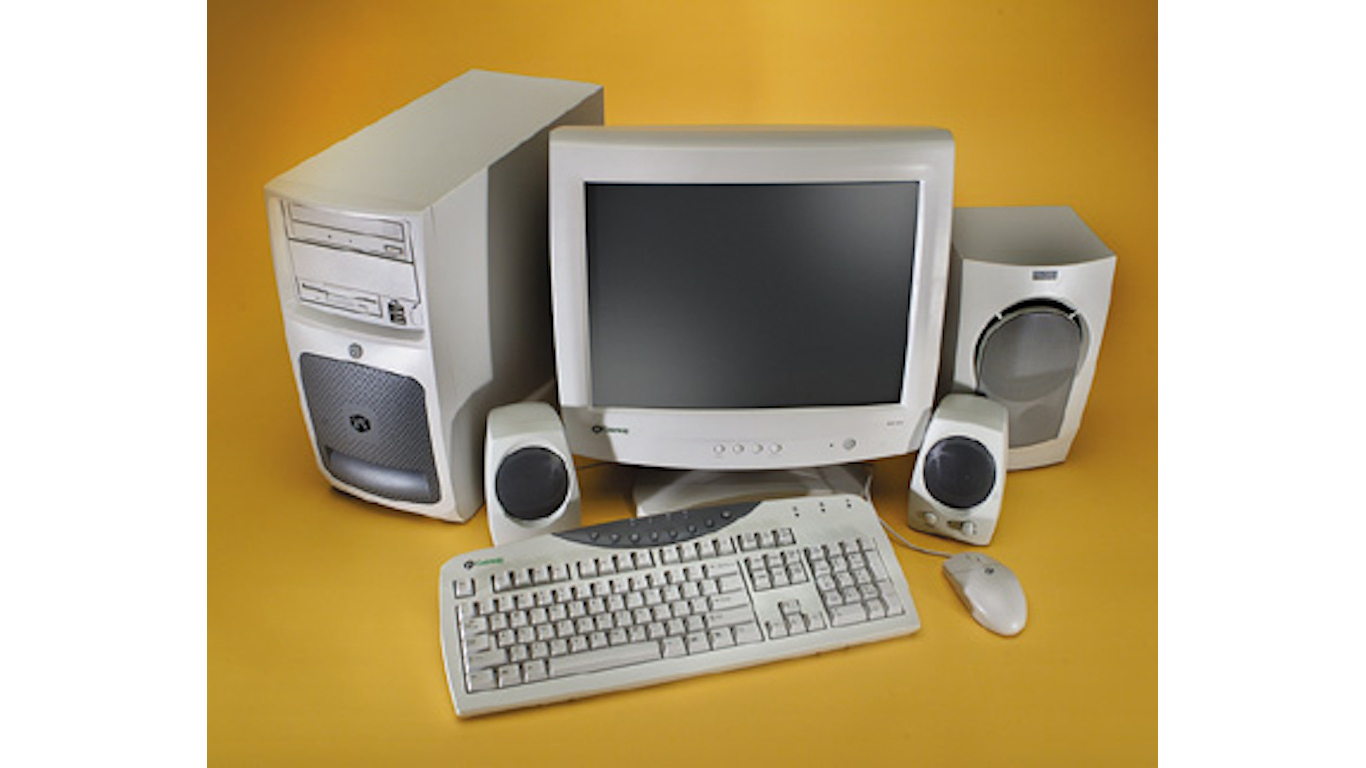
2000
>Notable computer: Gateway Performance 1500
>Price tag: $3,089
>Inflation adjusted price: $4,272
The first computers with Pentium 4 processors became available in 2000. The Gateway Performance 1500 was one of the most popular of the inaugural Pentium 4 computers.

2001
>Notable computer: Apple Titanium PowerBook G4
>Price tag: $3,499
>Inflation adjusted price: $4,705
In the history of Apple, 2001 was an important year. The company opened its first 25 Apple stores and released the Titanium PowerBook G4 to widespread acclaim.
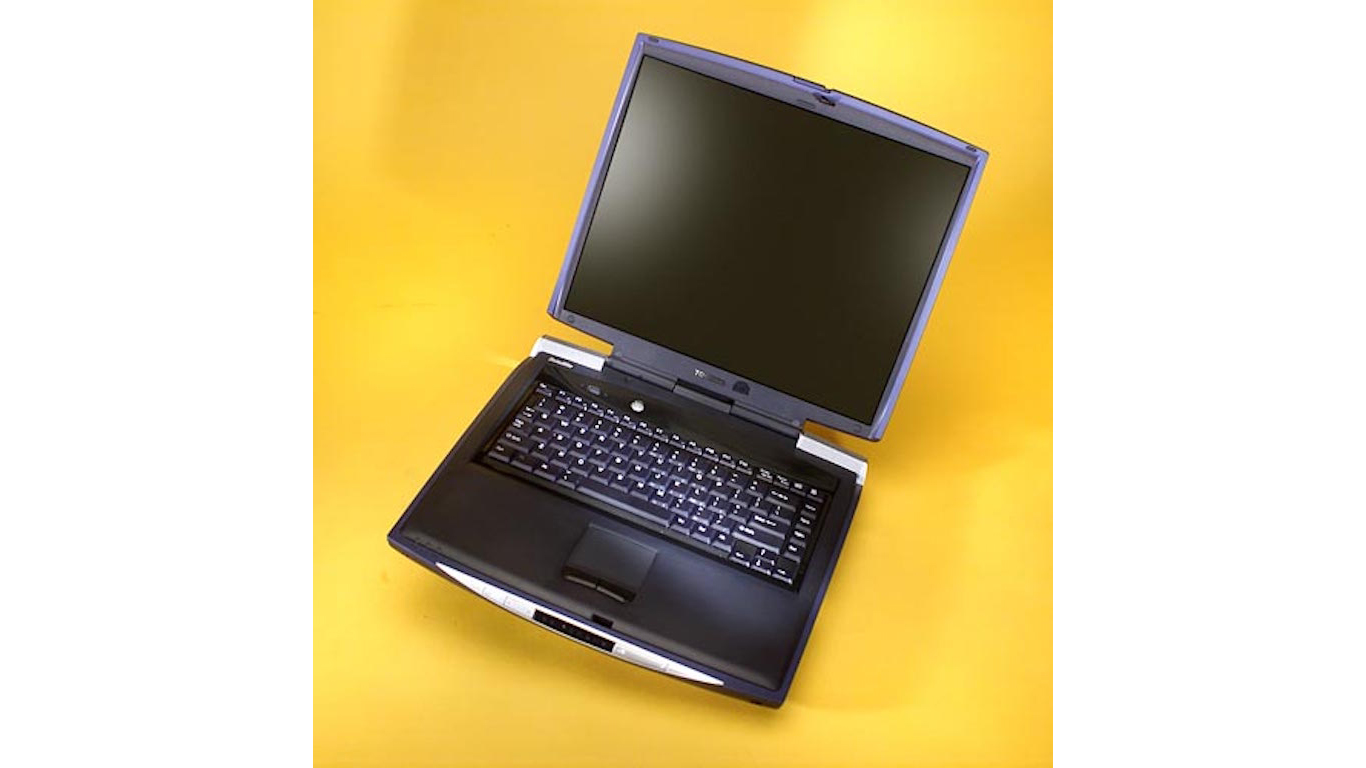
2002
>Notable computer: Toshiba Satellite 1955
>Price tag: $2,499
>Inflation adjusted price: $3,308
With its Pentium 4 processing power and detachable keyboard, the Toshiba Satellite 1955 was one of many advanced notebooks that heralded the public adoption of laptop computing.
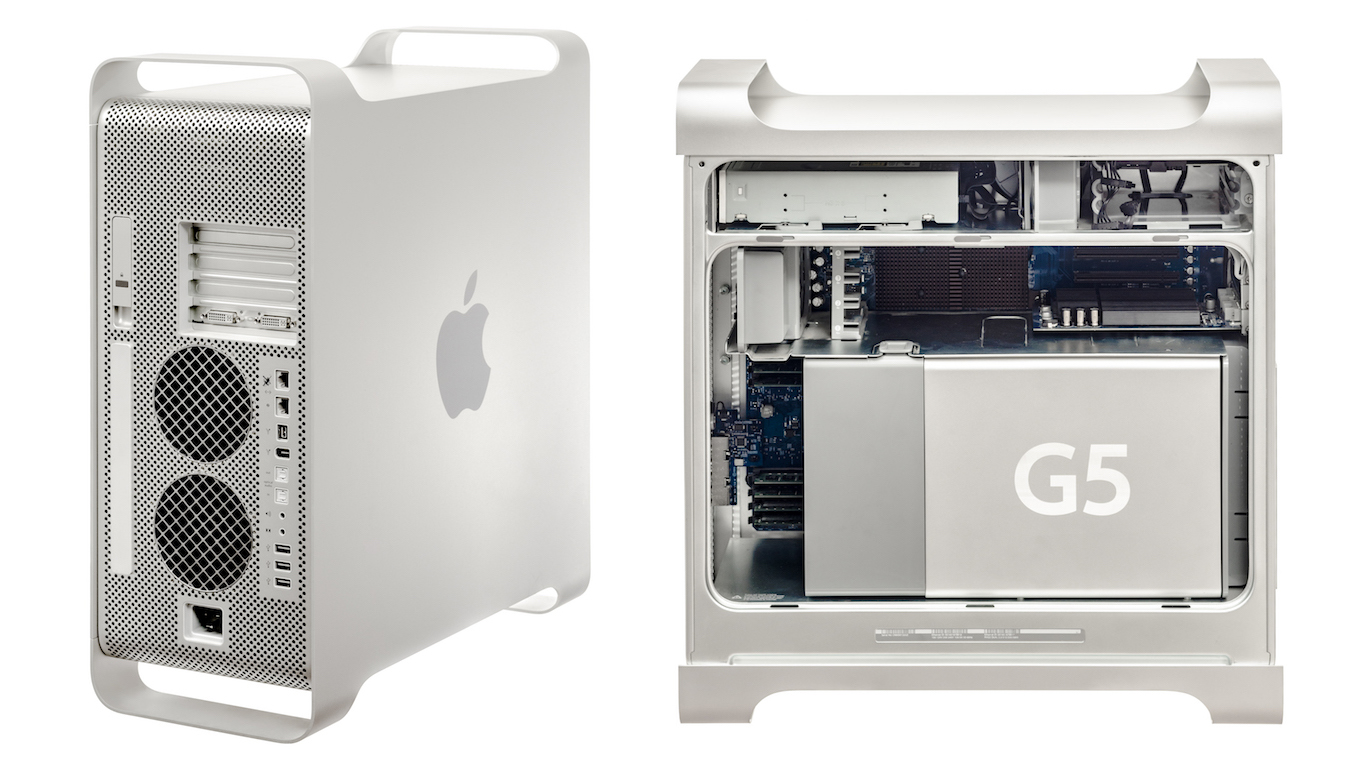
2003
>Notable computer: Apple Power Mac G5
>Price tag: $1,999
>Inflation adjusted price: $2,587
At the time of its release, the Power Mac G5 was the most powerful Macintosh computer. It was the first personal computer to utilize 64-bit processing, allowing users to run tasks twice as fast as was possible with 32-bit architecture, the standard at the time.

2004
>Notable computer: Sony VAIO PCV-V200G
>Price tag: $1,699
>Inflation adjusted price: $2,142
The Sony VAIO was an all-in-one system — a fully functional PC in an LCD monitor with TV capabilities. It was marketed as a space-saving multimedia desktop, ideal for college students. The machine was introduced in 2004, the last year in which desktop computers outsold laptops.
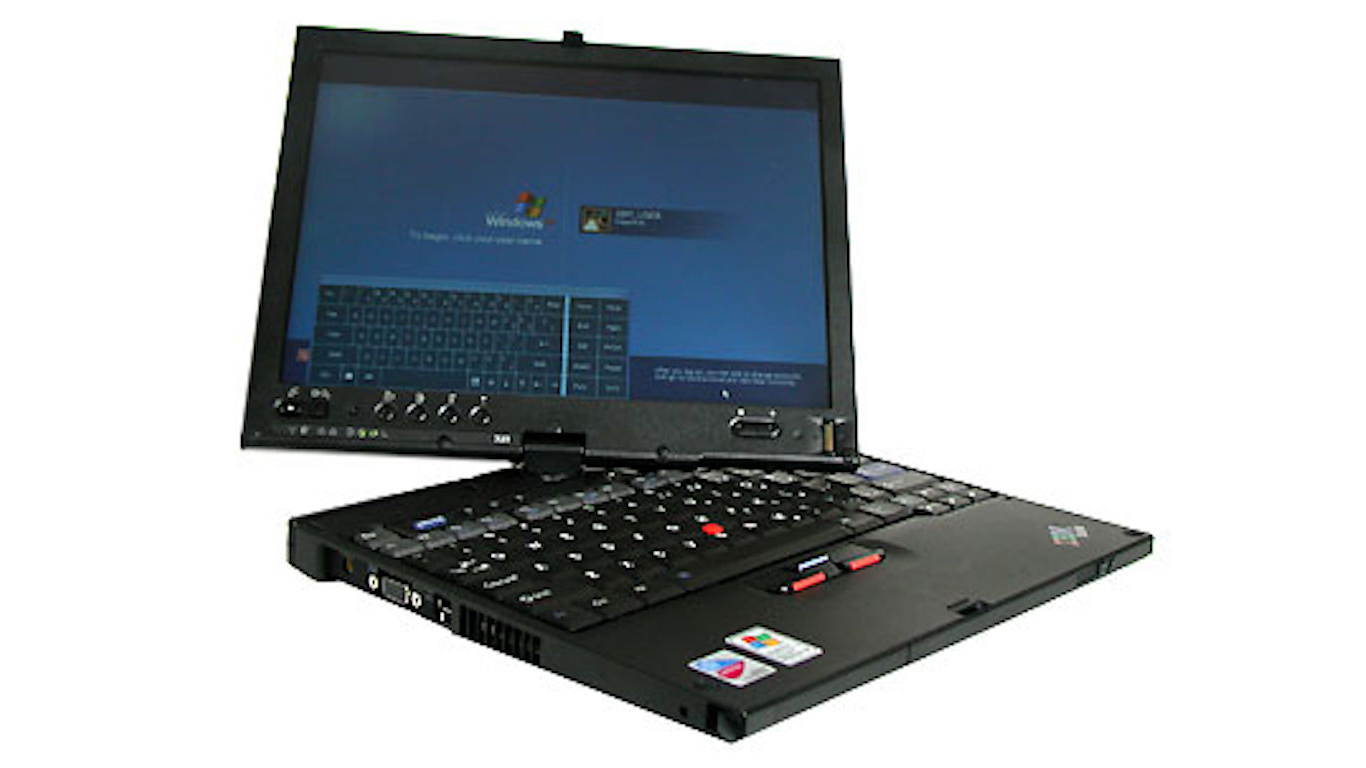
2005
>Notable computer: Lenovo ThinkPad X41
>Price tag: $2,249
>Inflation adjusted price: $2,742
Lenovo purchased IBM’s personal computing unit in 2005. The unit included the ThinkPad X41, whose security features and pen touch technology made it one of the year’s most popular computers. Lenovo’s investment has ultimately proven sound, and the company today is the global leader in worldwide PC shipments.
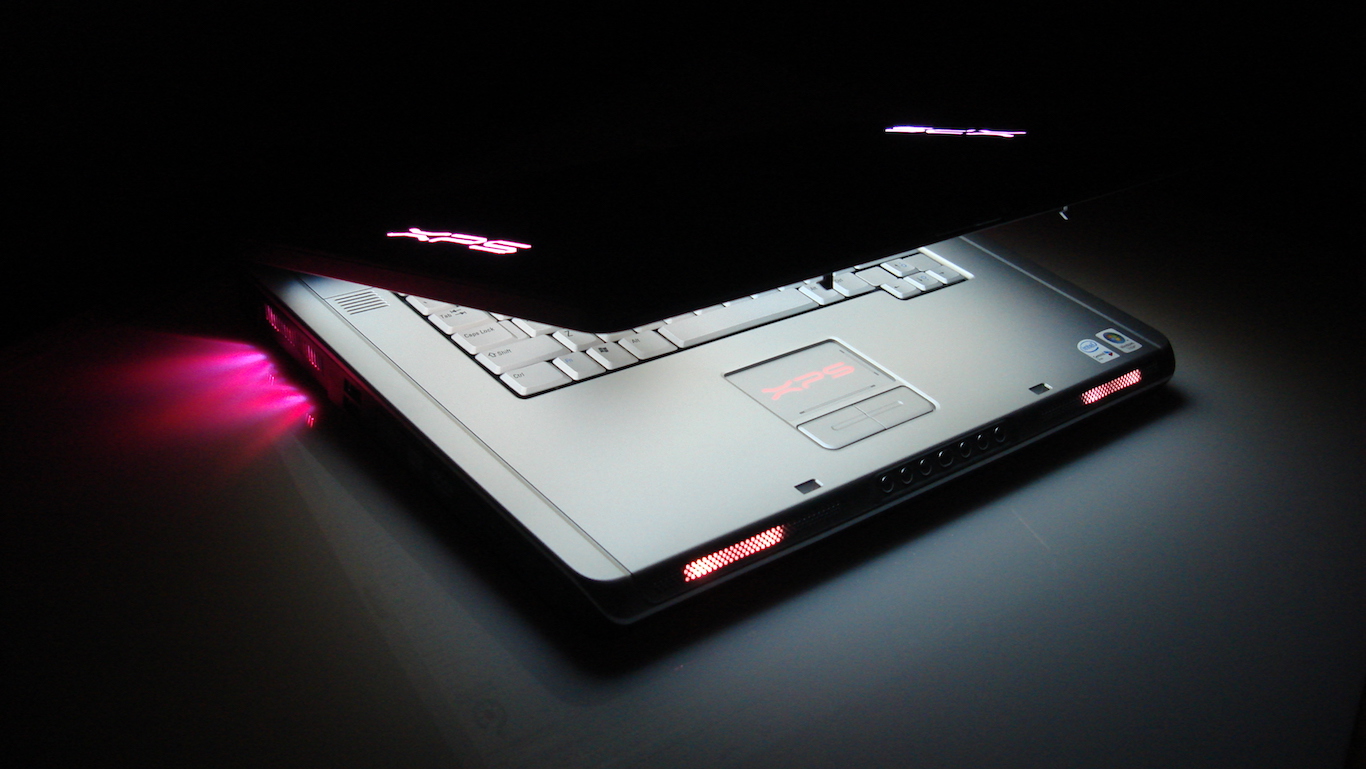
2006
>Notable computer: Dell XPS M1710
>Price tag: $2,845
>Inflation adjusted price: $3,361
In March 2006, Dell bought high-end gaming machine manufacturer Alienware. That same year, Dell sold the XPS M1710, which was one of the best-rated gaming notebooks of the year.

2007
>Notable computer: iPhone 1
>Price tag: $599
>Inflation adjusted price: $688
Former Apple CEO Steve Jobs unveiled the first iPhone in January 2007. Apple has since sold more than 700 million of its six generations of iPhones and is on track to sell far more. By combining a web browser, music player, and cell phone with an innovative user interface, the iPhone sparked a smartphone revolution that continues to change how consumers and technology interact.
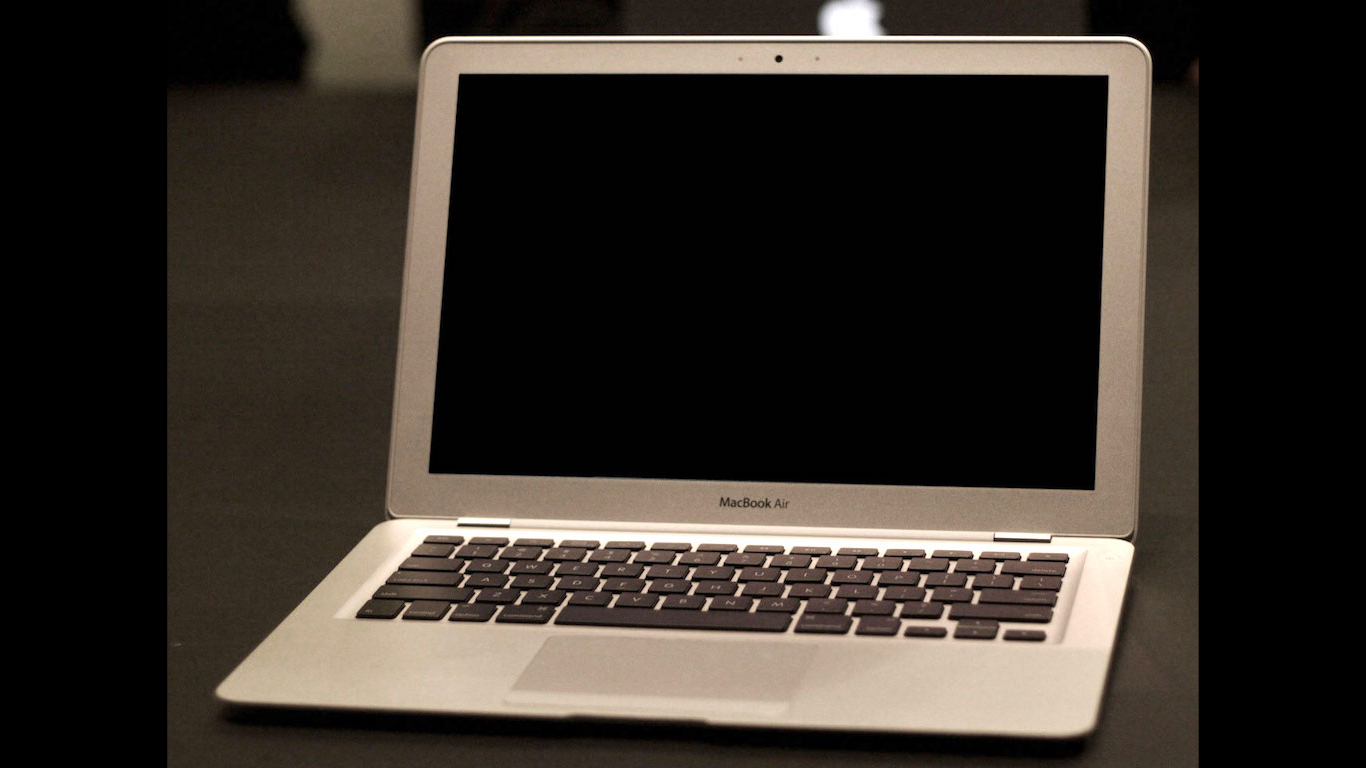
2008
>Notable computer: MacBook Air
>Price tag: $1,599
>Inflation adjusted price: $1,769
The increasing efficiency of computer chips allowed manufacturers to produce lighter and smaller machines, and the introduction of the MacBook Air in 2008 marked a transition to a new era. The first version could be purchased with a solid-state hard drive — the first mass-market computer to run exclusively with this technology — and weighed just 3 pounds.
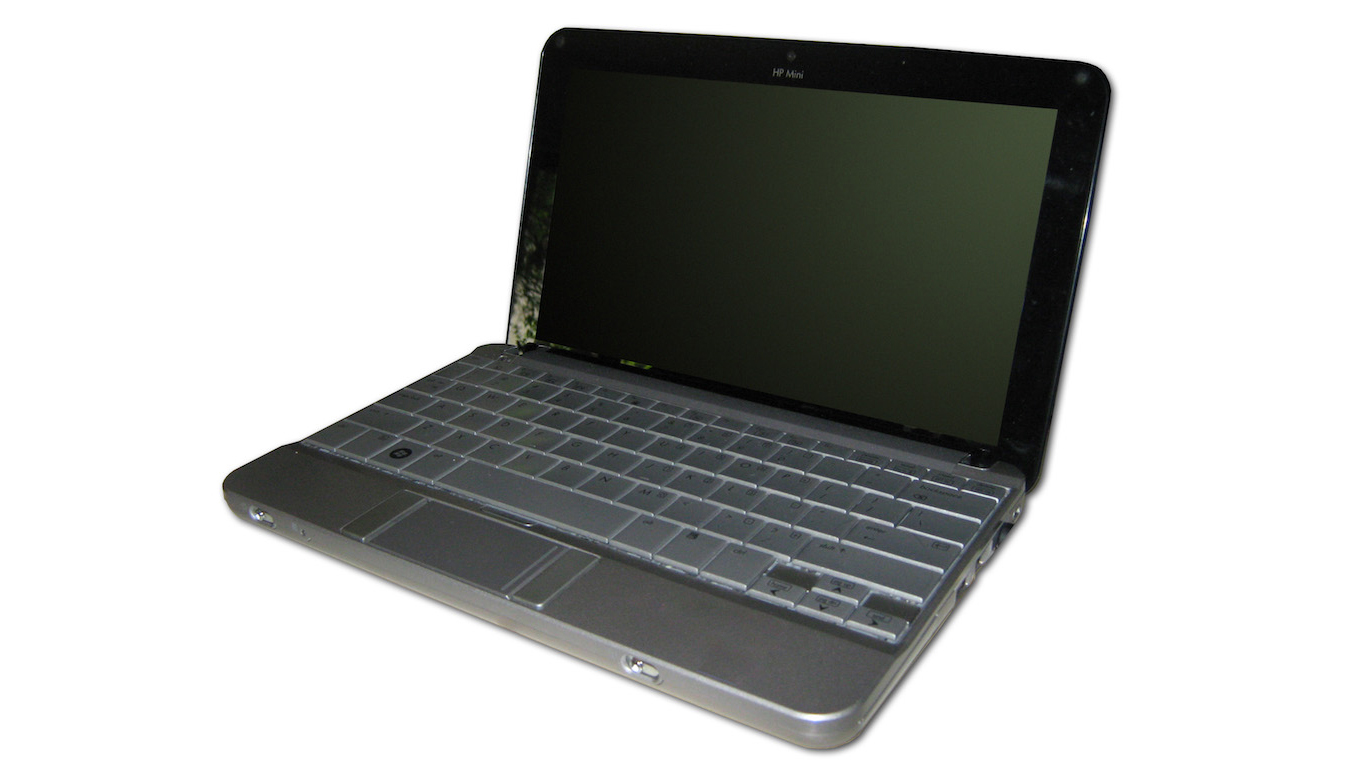
2009
>Notable computer: HP 2140 Mini-Note
>Price tag: $499
>Inflation adjusted price: $554
Computer manufacturer Hewlett-Packard was the industry leader in global PC sales in 2009. It built many of the most popular PCs of the year, including the HP 2140 Mini-Note.

2010
>Notable computer: iPad
>Price tag: $499
>Inflation adjusted price: $545
Tablet sales amounted to less than 2 million units in the year before the iPad’s release. When the iPad was released in 2010, tablet sales shot up to 19.7 million. By 2015, tablet sales reached 242.3 million. The iPad combined the most popular features of the iPhone on a 9 inch screen, and gave a platform to thousands of new programs and applications.

2011
>Notable computer: Acer Chromebook
>Price tag: $349
>Inflation adjusted price: $369
2011 marked the release of Google’s Chrome OS as well as the first laptop to run on the operating system, the Chromebook. One of the first Chromebooks, built by Acer to provide just basic functionality, cost just $349.

2012
>Notable computer: Apple iPad (third generation)
>Price tag: $499
>Inflation adjusted price: $518
Although the iPad had been around for more than a year by 2012, sales of the device reached truly astronomical levels that year. Apple sold more than 50 million units that year. PC World rated the third generation iPad as the second best product of 2012, in part because it offered significant upgrades to the previous versions, including a high-resolution Retina display.
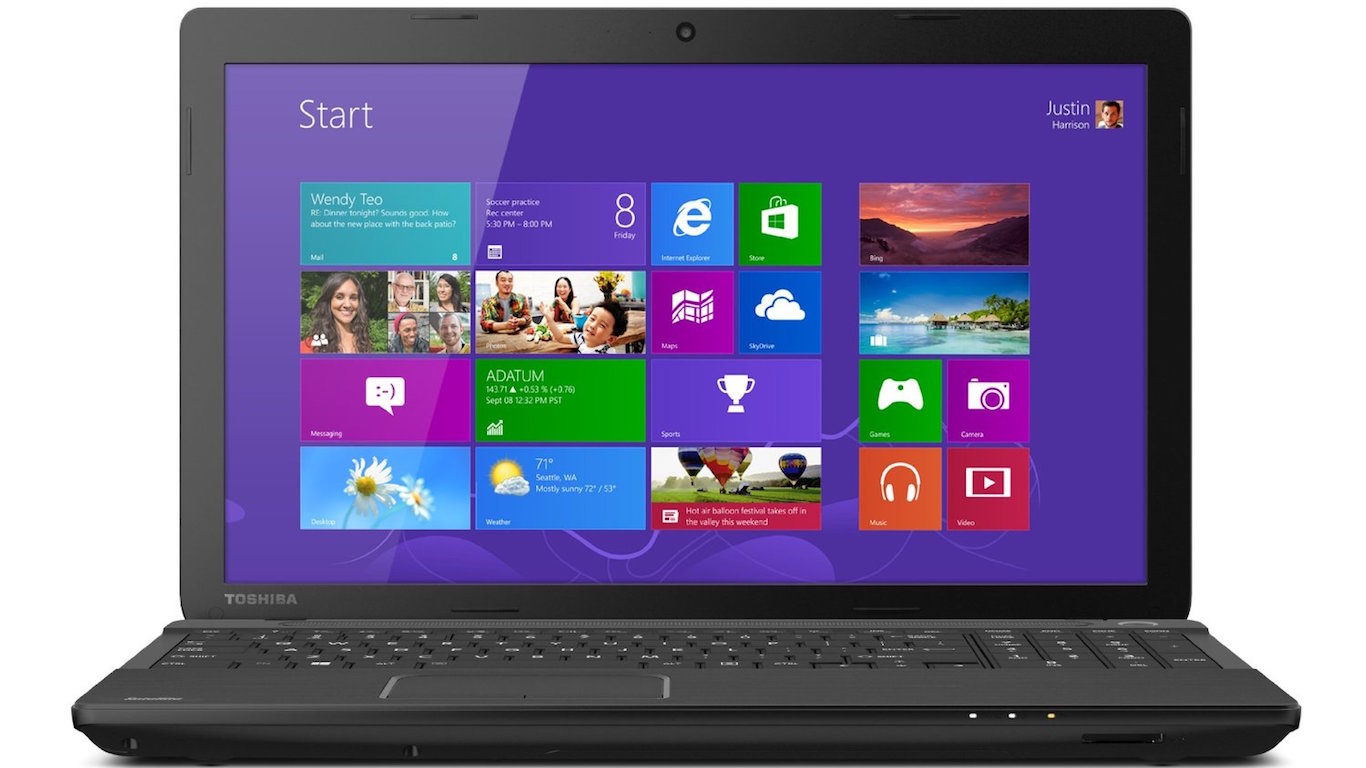
2013
>Notable computer: Toshiba Satellite C55D
>Price tag: $330
>Inflation adjusted price: $337
The Toshiba Satellite C55D is a budget laptop. For just $330, consumers can browse the Internet, watch movies, and check email. It was one of the best-selling laptops of 2013.
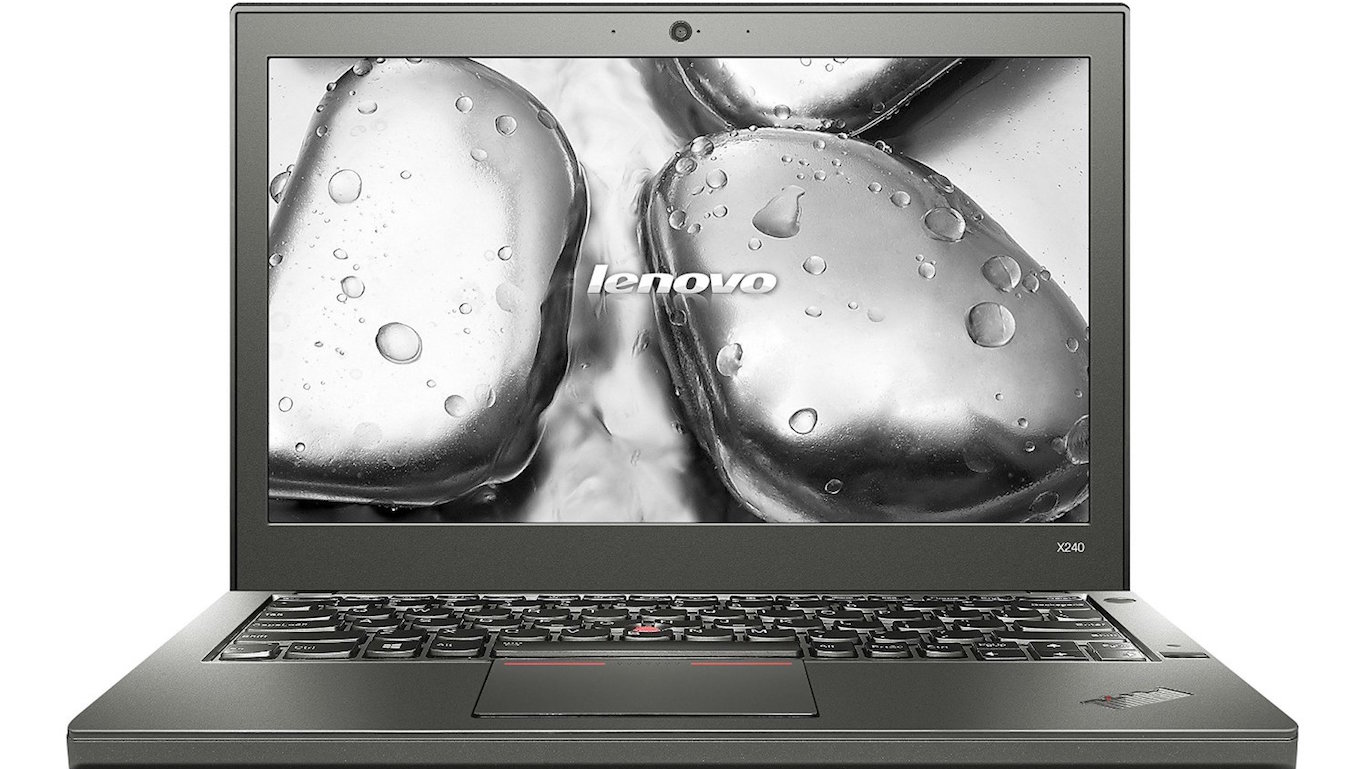
2014
>Notable computer: Lenovo ThinkPad X240
>Price tag: $1,555
>Inflation adjusted price: $1,564
A long way from the 1994 ThinkPad 775CD, recognized as the first laptop with a CD-ROM drive, the ThinkPad X240 is notable for its numerous USB and VGA ports. The X240 is also the lightest ThinkPad to date and has an innovative dual battery system that ensures a longer charge. 2014 was the final year in which desktops and notebooks outsold tablet computers.
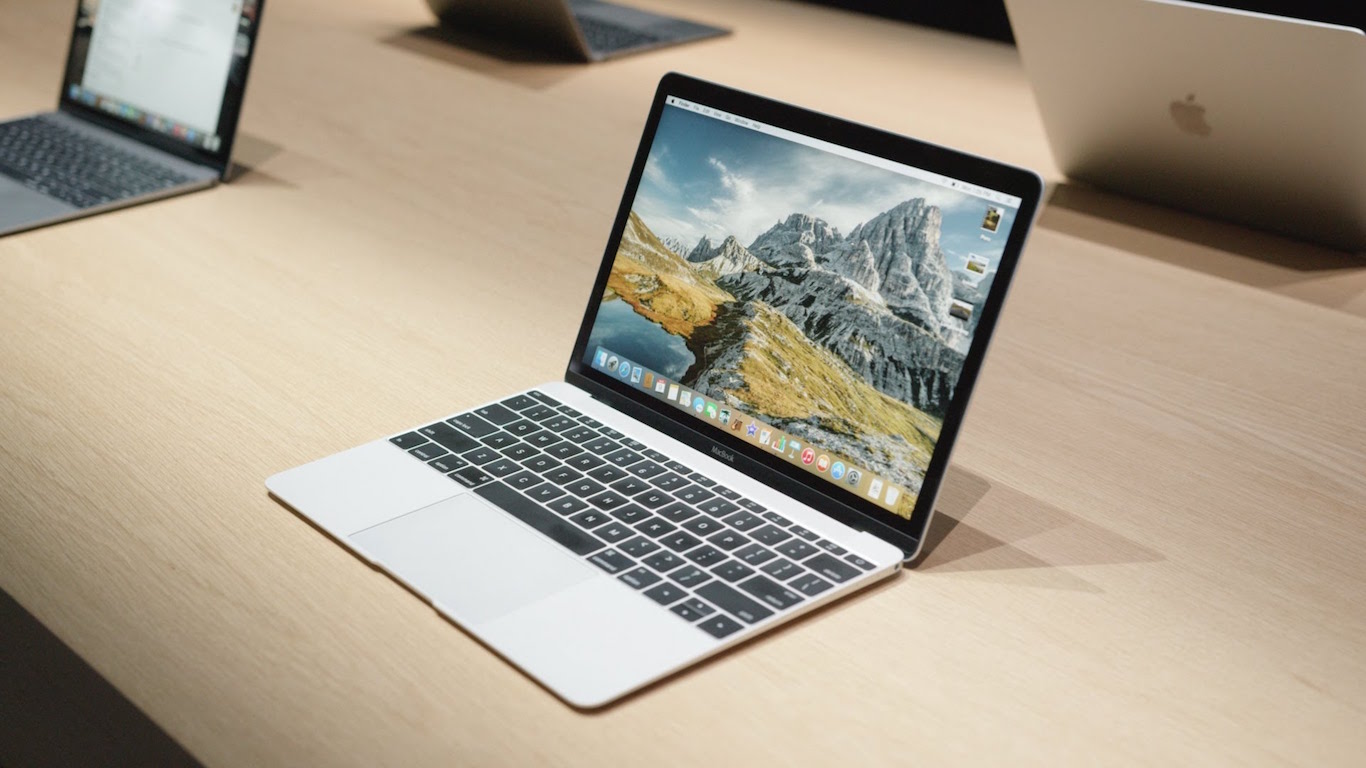
2015
>Notable computer: MacBook
>Price tag: $1,299
>Inflation adjusted price: $1,305
After being discontinued for four years, the MacBook was reintroduced in 2015. The newest MacBook is thinner than its predecessors and has a higher pixel density meant to enhance the images on its screen. 2015 was the first year in which tablets outsold desktops and laptops.
Start by taking a quick retirement quiz from SmartAsset that will match you with up to 3 financial advisors that serve your area and beyond in 5 minutes, or less.
Each advisor has been vetted by SmartAsset and is held to a fiduciary standard to act in your best interests.
Here’s how it works:
1. Answer SmartAsset advisor match quiz
2. Review your pre-screened matches at your leisure. Check out the advisors’ profiles.
3. Speak with advisors at no cost to you. Have an introductory call on the phone or introduction in person and choose whom to work with in the future
Thank you for reading! Have some feedback for us?
Contact the 24/7 Wall St. editorial team.